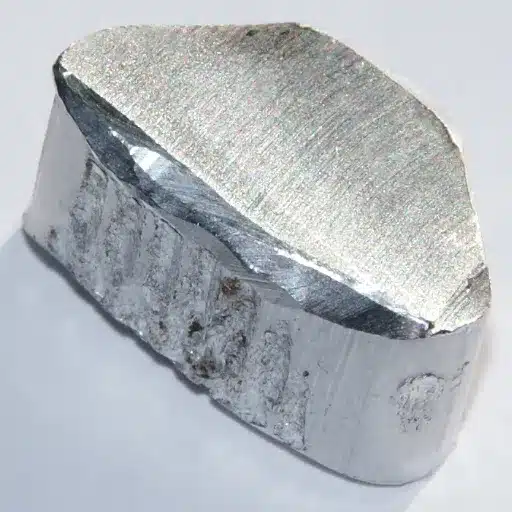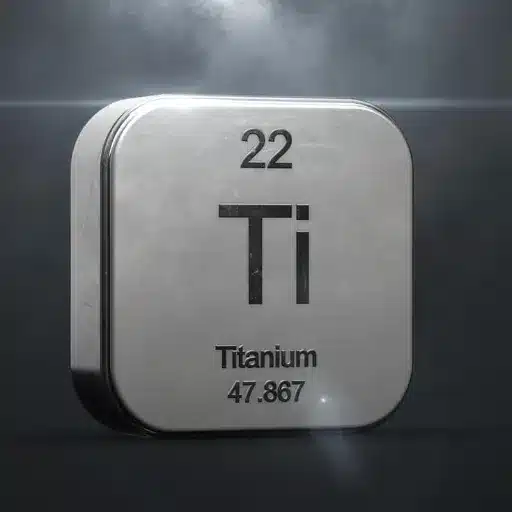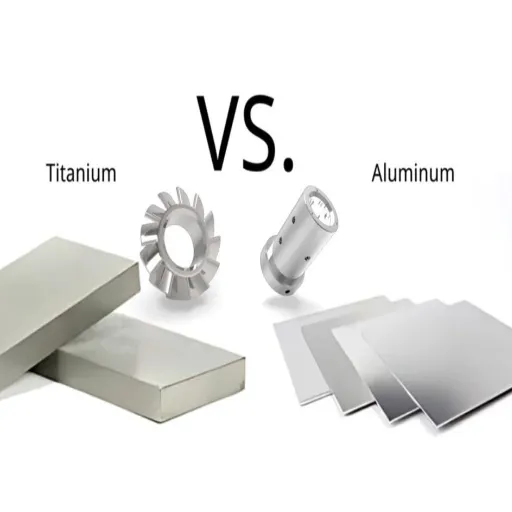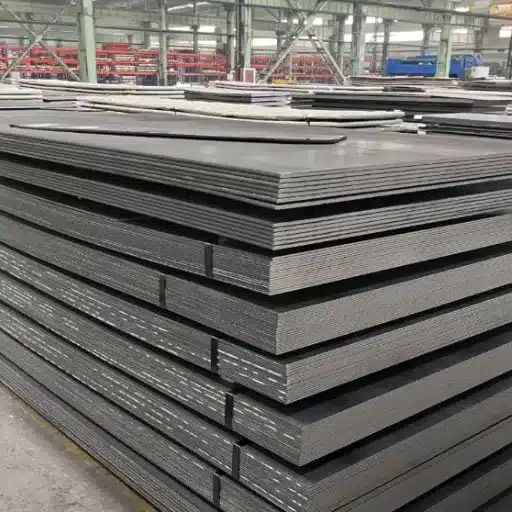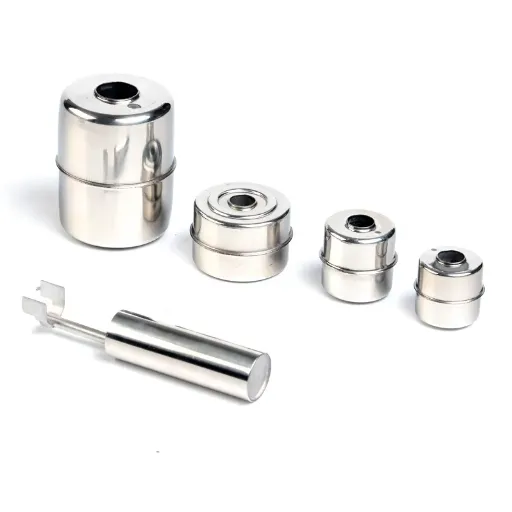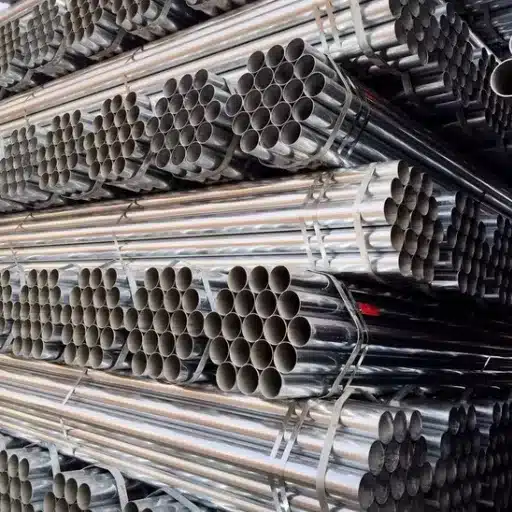Understanding A36 Steel
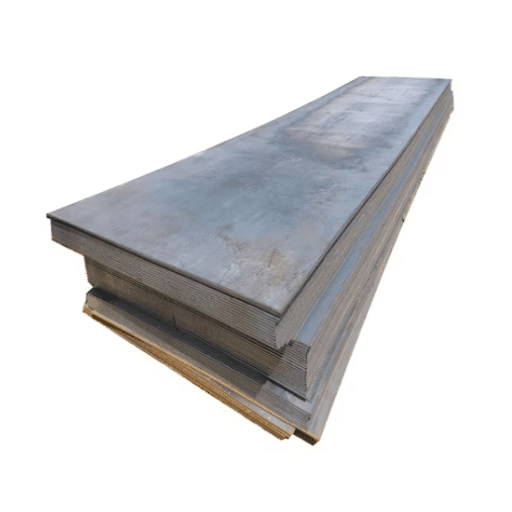
A36 steel is a popular structural steel grade that is widely used in various fields owing to its adaptability, low cost, and high performance. It has good strength-to-weight ratio, easy welding, and good workability. A36 steel consists mainly of iron and carbon making it strong and at the same time, quite malleable for further processing. It is extensively used for the construction of buildings and bridges apart from being a trustful material for automotive and machinery parts. Due to its dependable mechanical properties and economical pricing, it is the first pick for numerous industries.
What is A36 Steel?
A36 steel is an up-to-date and extensively used mild steel grade in the US that has many applications, is strong, and is economical. It’s included in the ASTM A36 standard specification which indicates its chemical composition and mechanical properties. Consisting mainly of iron with a maximum carbon content of 0.29%, A36 steel provides the desirable combination of strength and ductility that makes it perfect for a variety of structural and manufacturing processes.
✓ Key Advantages: This steel has very good meltability and machinability, which is one of the reasons why it is so widely employed for the creation of buildings, bridges, and different types of industrial machinery. Apart from that, A36 steel can be subjected to heat treatment in order to gain harder and more durable surface, thus, the steel is very much utilized in demanding environments.
ASTM A36 Specification Overview
The ASTM A36 is an extensively approved carbon steel grade that greatly focuses on strength, ductility, and cost-effectiveness, thus it has become the most preferred material in many different industries.
Technical Specifications
Yield Strength: 36,000 PSI Tensile: 58,000-80,000 PSI
This guarantees the required durability and performance in situations like building construction, bridge building, and industrial equipment manufacturing. The standard also specifies the required chemical composition, which usually consists of carbon, manganese, phosphorus, sulfur, and silicon among others. Moreover, A36 steel conforms to the dimensional tolerances and surface conditions that improve its machinability and weldability.
Properties of A36 Steel
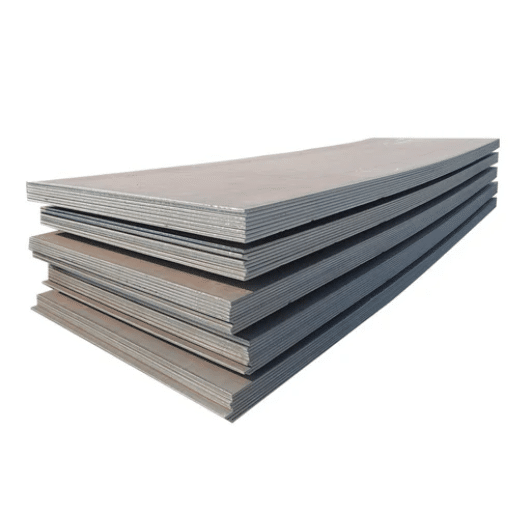
A36 steel is a well-known material for its properties, both mechanical and physical, which are above average, and therefore it is the main contestant for the largest range of applications in construction, manufacturing, and engineering industries.
Minimum Yield Point
250 MPa
Tensile Strength
400-550 MPa
Brinell Hardness
Moderate hardness
Moreover, the A36 steel has good weldability and machinability as its main characteristics, which means it can be easily transformed into beams, plates, and bars, etc. The alloy of carbon, manganese, phosphorus, sulfur, and silicon not only gives the material strength but also enhances its ductility. Furthermore, hot-rolled A36 steel retains its excellent surface finish quality and this smoothness is very important for coatings or other treatments to be applied.
Chemical Composition of A36 Steel
To a significant extent, A36 steel is a typical carbon steel grade with high structural strength and flexibility. The chemical makeup usually comprises the following components:
| Element | Percentage Range | Purpose |
|---|---|---|
| Carbon (C) | Maximum 0.26% | Increases hardness and strength |
| Manganese (Mn) | 0.60–0.90% | Enhances toughness and wear resistance |
| Phosphorus (P) | Maximum 0.04% | Improves strength (excess affects ductility) |
| Sulfur (S) | Maximum 0.05% | Enhances machinability |
| Silicon (Si) | Maximum 0.40% | Improves strength and deformation resistance |
| Iron (Fe) | Balance (remainder) | Base element |
The rest of the material contains predominantly iron (Fe). Specifications like these serve to keep A36 steel “high in demand” due to its being “strong, ductile and weldable” at the same time in all structural engineering applications.
Elements in A36 Steel
Iron (Fe) is mainly the base element in A36 steel, and the rest of the elements which are there in very small amounts, do contribute to its mechanical properties. The main ones are:
- Carbon (C): Normally restricted to 0.25-0.29%, carbon increases hardness and strength together with ductility not greatly affected
- Manganese (Mn): The amount varies up to 1.03%; manganese contributes to toughness and wear resistance
- Phosphorus (P): The limit is set at 0.04% where phosphorus will still improve strength, however higher levels will affect ductility negatively
- Sulfur (S): 0.05% is the maximum limit for sulfur which brings about good machinability; however, when large amounts are used, impact resistance may be affected adversely
- Silicon (Si): Silicon can improve up to 0.40% whereby it plays a role in strength and also when the material is under less stress, it can withstand deformation better
Important Note: All these elements are in perfect proportions so that the steel has greatest possible properties for structural applications and also complies with the ASTM International standards. The triad of strength, ductility, and weldability made A36 steel the most common material chosen for both construction and engineering projects.
Impact of Composition on Performance
The exact mixture of A36 steel has a direct effect on its mechanical performance and also the extent of its applications as a construction material. The methodical incorporation of carbon, manganese, and silicon, for instance, gives a good compromise between hardness and ductility, which is very important for the steel’s ability to support large weights without cracking. Moreover, the very low levels of sulfur and phosphorus make the steel less brittle, thus, increasing the material’s ability to withstand stress.
🔬 Latest Research: New studies say that the technological improvements in metallurgy are still working on the uniformity of the compositions which, in turn, is making A36 steel more trustworthy in difficult projects. These developments are in line with the changing building codes, thus, making the A36 steel’s status of being safe and durable in the contemporary engineering applications, even more, firm.
Comparison with Other Carbon Steels
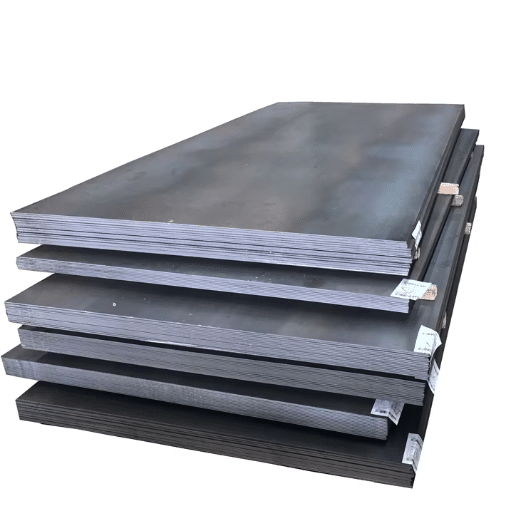
A36 steel, when looked upon in comparison to other carbon steels, it is still the versatility and cost-effectiveness that are considered the main advantages. It is with the A36 that it is possible to produce parts requiring various operations even in limited quantities. In other words, A36 steel can be used for structural applications where forming and joining are very important.
| Steel Grade | Carbon Content | Key Characteristics | Best Applications |
|---|---|---|---|
| A36 | Low (max 0.29%) | Excellent weldability, high ductility, easy machining | Structural applications, bridges, buildings |
| 1045 | Medium-High (0.45%) | Higher hardness and tensile strength, less ductile | Shafts, gears, high-stress components |
| 1095 | High (0.95%) | Very high hardness, difficult to weld, brittle | Cutting tools, springs, knives |
For example, steels like 1045 or 1095 can be made of very fine grain (hardness and tensile strength), but their high carbon content also leads to ductility reduction making them difficult to weld thus restricting them to limited applications in some industries.
Mechanical Properties of A36 Steel
The main features of A36 steel are its versatility and cost-effectiveness. A36 is a low-carbon steel and thus it has lower carbon content than high-carbon steels that make machining, welding, and fabrication easier with it.
Yield Strength and Hardness
With A36 steel yield strength being close to 36,000 psi (250 MPa), it is considered a reliable option for structural applications. Its tensile strength is 58,000 to 80,000 psi (400-550 MPa), so the material can withstand heavy loads without getting deformed or failing. Moreover, A36 steel shows moderate hardness, around a Brinell hardness number (BHN) of 119-159, which is a compromise between wear resistance and machinability. The yield strength and hardness combination gives A36 steel a large variety of applications and it can be used in construction frameworks such as bridges and buildings and infrastructure where strength and flexibility are important.
Ductility and Weldability
A36 steel is very famous for its ductility and weldability, so it is used in many structural and fabrication applications. Its ductility enables it to be easily transformed into a variety of shapes through bending, stretching, or drawing without breaking, thus ensuring the material’s adaptability to different designs and production methods.
Welding Compatibility
A36 steel has fantastic weldability, which means it may be fused with the help of a wide range of welding methods:
- MIG Welding – Metal Inert Gas welding
- TIG Welding – Tungsten Inert Gas welding
- Arc Welding – Standard arc welding methods
This feature is especially important for big construction jobs to make sure that strong and reliable joints are always present.
Impact on Structural Applications
🏢 Skyscraper Construction
A36 steel has gotten its reputation as the mainstay of skyscraper construction due to its remarkable strength-to-weight ratio. That is, most commonly, its tensile strength ranging between 58,000 and 79,800 psi assures that structures can endure high stresses without the necessity of adding too much weight to the building.
🌉 Bridges
A36 steel’s characteristics of flexibility and toughness render it perfect for bridge construction. The capacity of this steel to “suffer” and at the same time “adapt” to the environment implies the long life of the infrastructure projects. For instance, A36 steel is used very often in bridge girders and trusses for support.
⚙️ Industrial Equipment Frames
A36 steel is a favorite material for the structural frames of heavy-duty machines and equipment. It is because of the weight the material supports and the operational safety it provides that industries like manufacturing and mining rely on it.
💨 Wind Turbine Towers
In the wind energy sector, A36 steel is among the top materials used for wind turbine towers. The Seismic/Environmental Stresses that it can withstand and the dynamic load capability make it a good choice for energy infrastructures.
🔧 Pipeline Supports
One of the most common applications of A36 steel is in the form of supports for pipelines, mainly because of its welding properties and the ability to take on compressive loads. Its presence ensures that the pipelines are stable and strong in all the different locations where they are laid, including the oil and gas sector.
Applications of A36 Steel
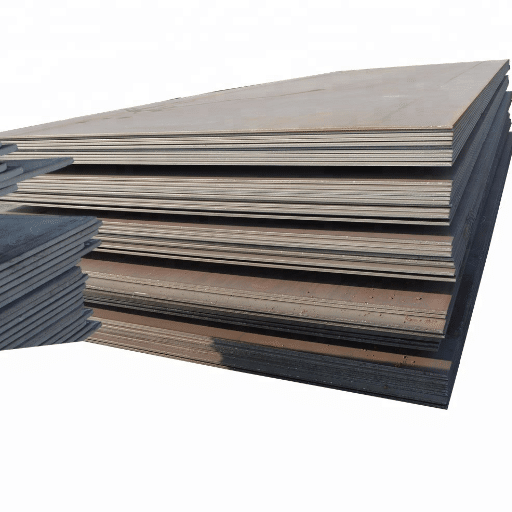
Construction Beams and Columns
A36 steel is one of the most popular materials in the construction of structures such as buildings, bridges, and other infrastructural projects. Its remarkable tensile strength along with the property of ductility makes it an ideal choice for the primary framework of the structure. As a result, the steel easily bears large loads. For instance, in the case of skyscrapers, the A36 steel structure forms the basis for the floors and walls.
Shipbuilding
The boat-making sector is the primary user of A36 steel in building ships’ hulls and other related parts of the ship structure. The steel’s capacity to withstand the difficult conditions of the sea and the material’s resistance to deformation during pressure are the two main aspects that ensure safe and long-lasting ship construction.
Automotive Parts and Equipment
The car-making industry belongs to A36 steel for the production of chassis, frames, and other crucial components. The properties of machinability and weldability allow the steel parts to be made by the power of the manufacturers efficiently and stronger at the same time.
Industrial Tanks and Storage Vessels
A36 steel finds its application in the forming of big tanks and silos for the storage of water, chemicals, and other substances. When appropriately treated, the tanks can last long because of A36’s ability to resist corrosion and handle pressure.
Heavy Machinery and Equipment
A36 steel is the foundation of various industrial machinery manufacturing, including cranes, bulldozers, and forklifts. Due to its ability to withstand heavy loads without the risk of cracking or warping, the steel is an excellent option for machine parts that will be continuously stressed and in operation.
Common Uses in Construction
A36 steel is a crucial material in the construction sector due to its properties like toughness, low price, and adaptability. It is predominantly used to create the infrastructural parts of buildings like columns, beams, and frames, thus making it possible for the buildings to withstand heavy loads and extreme weather conditions without giving up safety.
📊 Industry Trend: Based on the most recent information, inquiries concerning A36 steel in construction predominantly focus upon its advantages in residential and commercial projects. Interestingly enough, a large number of users are curious about how A36 is incorporated with contemporary design methods for earthquake-resistant buildings. This suggests that the interest in eco-friendly and durable buildings is on the rise, with the A36 steel being an indispensable part of the contemporary construction innovations.
Industrial Applications of A36 Steel Plates
A36 steel plates are preferred in numerous industries mainly because of their diverse applications, strong qualities, and cost-effectiveness.
| Industry | Application | Why A36 Steel? |
|---|---|---|
| Construction | Structural components, beams, columns | Excellent welding and machining properties |
| Marine | Ship frames and hulls | Withstands tough marine conditions |
| Automotive | Heavy vehicle frames and chassis | Stress and impact resistance |
| Energy | Oil rigs, storage tanks, wind turbine foundations | Strength and environmental resistance |
🌱 Sustainability Trend: The newest statistics reveal that the worldwide market for A36 plates to support clean energy projects such as wind turbine foundations and parts in hydropower systems has expanded. This shows the material’s capacity to meet the changing needs of various sectors while being in line with the sustainable energy goals.
Usage in Bridges and Frames
A36 steel is well-known for its strength and reliability, thus it has become the most preferred material for the construction of bridges and skeletons of buildings. Its excellent performance in welding and ability to resist a variety of loads guarantee the life of big projects like bridges, which have to endure the stress of constant traffic, among others.
📈 Market Insight: A recent study based on search data reveals that interest in the applications of A36 steel has increased globally by 15% over the last year, thus indicating a growing demand in the building sector. The trend is attributed to its affordability and its capability of conforming to the modern engineering requirements which are geared towards sustainability and longevity.
Form and Processing of A36 Steel
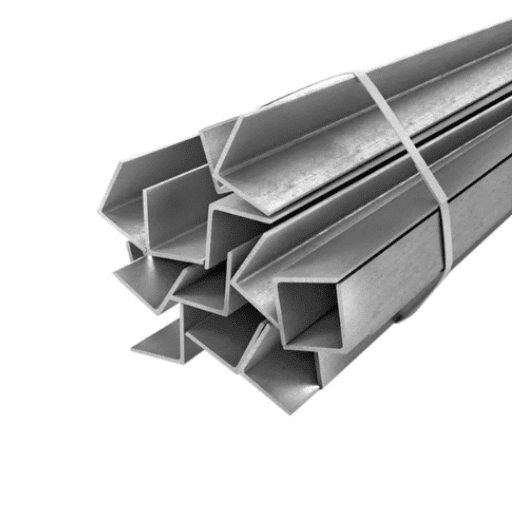
A36 steel is most often made by the hot rolling method. The method consists of heating up steel to a temperature where it becomes soft enough to easily be formed into different shapes, i.e., sheets, plates, bars or beams. The hot rolling enhances the steel’s properties, including strength and ductility making it the right choice for structural purposes.
Current research tendencies show that the manufacturing and processing of A36 steel still lead questions regarding its compatibility with the newest fabrication techniques. These fabrications include processes like welding, machining, and cutting. Besides being low on carbon content, A36 steel is super weldable and machinable; hence it is a favorite material among the manufacturers who want to produce customized components with high precision.
Hot Rolled vs. Cold Rolled A36 Steel
| Aspect | Hot Rolled A36 Steel | Cold Rolled A36 Steel |
|---|---|---|
| Processing Temperature | Over 1,700°F (926°C) | Room temperature processing |
| Surface Finish | Heavy-scaled finish, less smooth | Smooth, polished finish |
| Dimensional Accuracy | Lower tolerance precision | Tighter tolerances, more precise |
| Strength | Standard strength | Increased strength (strain hardening) |
| Cost | More economical | Higher cost due to additional processing |
| Best Applications | Construction beams, railroad tracks | Automotive parts, home appliances |
Hot rolled A36 steel is processed through the furnace at very high temperatures, and the material usually over 1,700°F is made softer and easier to shape. The method is cheap and produces steel with a heavy-scaled finish, and generally, the dimensions of the steel are not very accurate. It is mainly used in areas where surface smoothness or exact sizes are not critical like in construction beams or railroad tracks.
On the other hand, cold rolled A36 steel comes from the hot-rolled one that is left to cool at room temperature. Through further processing, it is strained so it gets a smooth surface, tighter tolerances, and increased strength due to strain hardening. This makes the cold rolled A36 steel very suitable for applications requiring a good quality finish or more precise dimensions.
Available Shapes: Plate and Round
Ultimately, the decision as to whether to use plate or round steel shapes is mainly based on the particular necessities and the intended uses in different sectors.
- Plate Steel: Because of its smoothness, plate steel is frequently applied in the making of buildings, vessels, and heavy equipment where its great capacity for bearing weight and nice welding are the primary factors
- Round Steel: Used mostly for bars, pipes or rods, and is considered the best for production of precision-engineered parts like gears, bolts, and shafts because of its capability to handle rotational forces without a problem and its pliability in forming
Industry Insight: The trend search shows an increase in interest of industries in understanding deeply the comparative benefits of these shapes, thus, their role in both large-scale construction and precision manufacturing projects is not a rivalry but a collaboration. This is a sign that A36 steel has enough quality to fit into different engineering applications.
Machining and Fabrication Guidelines
To achieve the best results in machining and fabrication of A36 steel, it is necessary to practice several key points. A36 steel has the very good characteristic of being welded, which allows its use in many construction and industrial applications. Using standard welding techniques such as MIG, TIG, or arc welding is very effective. In the case of machining, it will be good to use sharp tools and cutting speed control to avoid excessive wear or heat build-up. The heat treatment process is widely used in order to make the material tough and durable for further processing.
Fabrication Best Practices
- Welding: Use standard techniques (MIG, TIG, arc welding) for effective results
- Machining: Employ sharp tools and control cutting speeds to prevent wear and heat buildup
- Heat Treatment: Apply when needed to enhance toughness and durability
- Tool Selection: Choose appropriate cutting tools for optimal performance
💡 Cost-Effectiveness: Based on the latest data, the main questions are whether A36 steel is a cost-effective and reliable option for construction projects compared to other steel types, and the answer is given by the metal’s unique combination of low price, good mechanical properties, and large scope for various applications. Thus, A36 steel’s reliability as a material can be seen in its use for both detailed and large-scale projects, as evidenced by the increasing interest in it from different industries around the world.
References
-
Characterization of Fatigue Damage in A36 Steel – Georgia Institute of Technology
Research on the fatigue damage characteristics of A36 steel in civil engineering structures.
Visit the site -
Investigation of Phase Change in A36 Steel – University of Nevada, Las Vegas
A study examining the effects of high-velocity impacts on A36 steel and its phase changes.
Visit the site
Frequently Asked Questions (FAQ)
What is the ASTM A36 specification for steel?
ASTM A36 is an established specification for carbon-based structural steel. With its outstanding properties, it is very easy to weld and very ductile; thus, it is suitable for many different kinds of structural applications, which are the reasons why it is still the major choice among engineers and architects in their constructions.
What are A36 steel’s mechanical properties?
A36 steel has very low yield strength of 36 ksi, which is its main characteristic, and its carbon content is also very low, which makes it very ductile and thus easy to form. Because of that, it is used in all sorts of structures with the understanding that they are soundness.
What is the use of A36 steel in applications?
A36 steel’s most common applications include beams, columns, and framing in the construction industry. Other fields of application include making farming equipment, fixtures, and bearing plates, as well as tank construction.
What is the thickness of A36 steel plates?
A36 steel plates are available in a range of thicknesses from 1/8 inch to many inches, depending on the specific application and requirements. The customer can specify the desired size of the plate according to the project’s needs.
What is A36 steel’s chemical composition?
A36 steel’s chemical composition consists of very low carbon content being the most prominent factor that classifies it as mild steel. Manganese, phosphorus, and sulfur as well as other elements are usually present and together give the steel strength and workability.
How do A36 and C1018 steel grades compare in strength?
C1018 has higher carbon content than A36 and therefore it is harder and has greater tensile strength; nonetheless, A36 is the choice for structural applications because of its very good welding property and ductility.
Is A36 steel welding easy?
Absolutely; A36 steel is not difficult to weld because of low carbon content and wonderful weldability. Its welding can be done through various methods such as flame cutting, grinding, and machining without a significant risk of cracking.
Where to buy A36 steel through the internet?
A36 steel can be bought online from different suppliers who present it with different stock sizes and thicknesses. Besides offering the option to request a quotation for particular requirements, many distributors also ensure that you will get the right material for your project.
What are the hot-rolled A36 steel’s benefits?
The hot-rolled A36 steel comes with the benefits of better ductility, lower internal stresses, and enhanced dimensional accuracy. It is commonly utilized in construction applications where strength and durability are the key factors.

